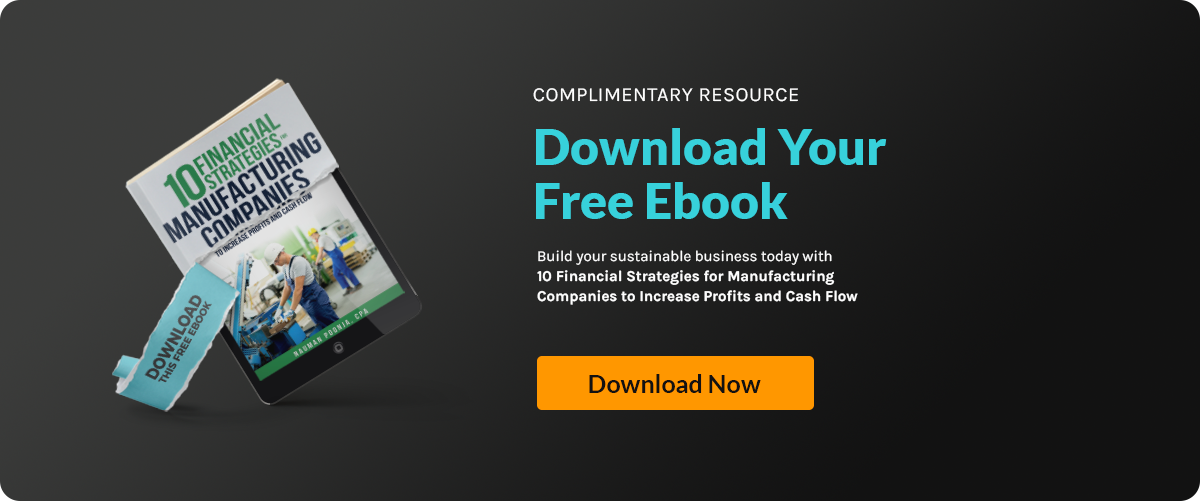In a manufacturing business, your assets help you run operations, produce goods, and grow over...
Boosting Manufacturing Profit with Fixed Asset Turnover

Many small to mid-sized manufacturing businesses face rising operational costs, underused equipment, and stagnant revenue growth. A recent report shows that 90% of businesses struggle with pricing management due to global uncertainties, making profitability even more challenging.
One key metric that can highlight hidden inefficiencies is the fixed asset turnover ratio. A low ratio often means that equipment and capital resources aren’t being used efficiently, leading to wasted resources and cash flow challenges.
This article explains the importance of the fixed asset turnover ratio, offers practical ways to improve resource utilization, and shows how optimizing this metric can support better cash flow management.
Understanding Fixed Asset Turnover for Better Efficiency
The fixed asset turnover ratio measures how efficiently a company uses fixed assets and operating assets to generate revenue, calculated by dividing net sales by average net fixed assets. A higher fixed asset turnover ratio indicates effective fixed asset and operating asset utilization, boosting profitability, while a lower ratio suggests inefficiencies and underperforming fixed assets and operating assets.
To improve the fixed asset turnover ratio, companies can optimize fixed asset and operating asset utilization by reducing downtime, conducting regular inspections, and using cloud-based tracking to identify underused fixed assets and operating assets. Proactive maintenance and reviewing fixed asset and operating asset history help extend asset life, reduce repairs, and enhance efficiency.
How Average Profit Margin for Manufacturer Impacts Growth
The average profit margin reflects how much profit a company makes for every dollar of sales. This profit margin is influenced by how effectively a business manages its resource turnover. A higher turnover rate can boost the profit margin by maximizing revenue without proportionally increasing costs.
To improve profit margins, businesses can adopt specific strategies that focus on optimizing asset utilization and operational efficiency. Here are three key steps to achieve a stronger profit margin:
Step #1: Optimize Production Capacity
Improve process efficiency for greater efficiency, cost savings, and a stronger profit margin. This involves analyzing key performance metrics, identifying bottlenecks in production, and implementing changes that enhance productivity to impact the profit margin positively.
Step #2: Strategic Asset Allocation
Ensure capital-intensive assets are allocated for the best use, reducing the risk of idle or underused resources and supporting a healthier profit margin through improved efficiency.
Step #3: Manage Fixed Assets Proactively
Align investment decisions with long-term growth goals, ensuring each asset contributes to the company’s financial performance.
By following these steps, businesses can enhance both their asset turnover and profit margin, driving greater financial success and supporting sustained growth.
Maximizing Return on Operating Assets for More Profit
Maximizing return on operating assets (ROOA) is key to improving profitability by optimizing the efficiency of operating assets like equipment, machinery, and fixed resources to generate more revenue without extra costs. To see how this works in practice, here’s a case study that highlights how Motorbus Company transformed its operations to boost profitability by optimizing the use of its operating assets.
Case Study: Motorbus Company
Motorbus Company faced declining profit margins due to inefficient use of operating assets and frequent vehicle breakdowns. To address this, Engr. Ancheta reviewed the company’s operating assets, reallocated resources to high-performing areas, phased out underused vehicles, and introduced preventive maintenance to reduce downtime and extend asset life.
By optimizing existing operating assets before new investments, Motorbus Company improved efficiency, boosted productivity, and maintained strong profit margins, proving that smart operating asset management is key to sustainable growth.
Using Financial Key Indicators to Improve Asset Management
Effective resource management is key to maximizing business performance and profitability. By monitoring key financial indicators, companies can gain valuable insights into how well their capital resources are being utilized, overall performance, and the effectiveness of their investments.
Here are the key metrics and best practices to improve the management of long-term resources and support sustainable growth.
1. Fixed Asset Turnover Ratio
Measures how effectively the company uses fixed assets to generate revenue. Regular tracking of this financial key metric helps identify trends and areas for improvement, ensuring assets are contributing to business growth.
2. Return on Assets (ROA)
Evaluates how effectively investments in capital resources drive profitability. A higher ROA indicates better resource performance and strong returns, making it an essential financial key indicator for assessing overall business efficiency.
3. Depreciation Rate
Assesses how quickly fixed assets lose value, which impacts long-term business valuation. Understanding this financial key factor allows companies to develop smart maintenance strategies that optimize asset life and reduce depreciation costs.
4. Asset Tracking Software
Enhances resource visibility for better decision-making, reduces the risk of unproductive resources, and aids in monitoring capital-intensive equipment. This tool supports the tracking of financial key data related to resource performance, location, and usage.
5. Financial Modeling
Forecasts resource performance and optimizes investment decisions by predicting future ROI based on current and projected resource utilization. This process relies on analyzing various financial key indicators to make data-driven business decisions.
6. Inventory Management
Aligns inventory control with resource use to improve the turnover ratio, reduce excess stock, and ensure efficient resource allocation. Effective inventory management is a critical financial practice that minimizes waste and improves productivity.
7. Improved Financial Position
Implementing these strategies strengthens a company’s financial key position, drives sustainable growth, and helps achieve higher profit margins. By focusing on financial key metrics, businesses can enhance profitability and long-term stability.
Monitoring and optimizing these financial key indicators not only improve fixed asset management but also contribute to the overall financial health of the company.
Maximize Manufacturing Profit with Accounovation
Boosting manufacturing profit isn’t just about cutting costs—it’s about maximizing the efficiency of your assets. At Accounovation, we understand how overwhelming it can be to manage rising costs, underutilized equipment, and the constant pressure to improve performance.
We specialize in helping manufacturing leaders not just track their fixed assets but optimize them for maximum impact. Our tailored strategies focus on improving your fixed asset turnover, enhancing resource utilization, and driving profitability—without adding unnecessary stress to your operations.
Contact us today to discover how we can help you optimize your fixed asset turnover and achieve sustainable growth with a partner who truly understands your business.







